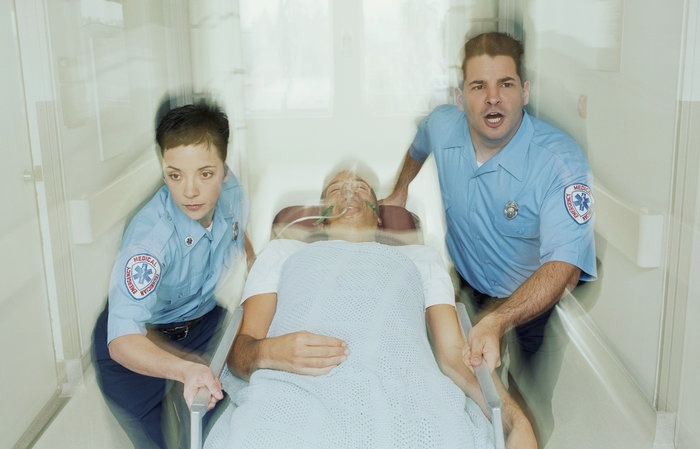
As a first responder, you are used to making rapid decisions, acting quickly, and treating the acute symptoms of your patient’s illness or injury. Though your fast action is necessary, do you ever stop and think about your patient’s long term outlook? You should. Your actions in the present can affect your patient’s future prognosis.
For example, while in the field, you have probably encountered many patients who have aspirated. Aspiration pneumonia and aspiration pneumonitis, the inhalation of oropharyngeal or gastric contents into the lower airways, are two potentially dangerous complications that can occur in the days following the incident. Increases in morbidity and mortality may result for these patients, especially in those with underlying medical conditions. So what can you do to help prevent this from happening?
Here are a few tips to consider:
1. Be aware of the types of patients that are at risk for aspiration.
Patients who have altered levels of consciousness, resulting in a decreased gag reflex and ability to maintain a patent airway are at increased risk. This may be seen in drug and alcohol overdoses, seizure, stroke, and head injury. Additionally, patients with neurologic disorders such as dementia, Parkinson’s disease, and Myasthenia gravis may present with a greater risk of aspiration. Elderly patients often have swallowing difficulties, placing them at a high risk of aspiration.
Being able to properly anticipate situations where your patient may be unable to protect their airway will allow you to respond quickly and effectively.
2. Bring your portable suction unit with you in every patient encounter.
Say you respond to a call for an unconscious, but breathing, patient. On arrival, you note that the patient is lying in a pool of vomit. If you have to send a colleague back to the ambulance to grab your suction unit, you are placing that patient at a greater risk for aspiration with every breath he takes. Don’t make that mistake.
Suction devices don’t have to be big and cumbersome. In fact, there are units that are designed to be lightweight and that easily fit into your first-in bag, while still delivering the powerful suction that you need. There is no reason to be unprepared.
3. Routinely assess your portable suction unit to be in proper working order.
You can’t expect to clear your patient’s airway if your portable suction isn’t functioning as it should. Make it a priority to check your device on a regular basis. It doesn’t take long, and the small time you invest is well worth the effort. At a minimum, you should assess:
- Your tubing - Is it properly connected and free from kinks or damage?
- Your canister or collection chamber - Is there an airtight seal? No visible cracks?
- Your batteries - Is your unit fully charged? Or if it operates on alkaline batteries, are they functioning and do you have extras on hand?
- Your motor and vacuum ability - Turn on the unit. Occlude the tip. Does the suction reach your vacuum specifications?
- Your consumable supplies - Do you have a good supply of sterile flexible catheters of appropriate sizes? Do you have a large diameter catheter for suctioning of thick secretions and vomit?
You can take a lot of pride in your ability to provide life-saving treatment as a first responder. But that should not underestimate everything else that you do. Even something as simple as suctioning your patient quickly and effectively can improve your patient’s prognosis down the line and reduce the risk of developing aspiration pneumonia.














